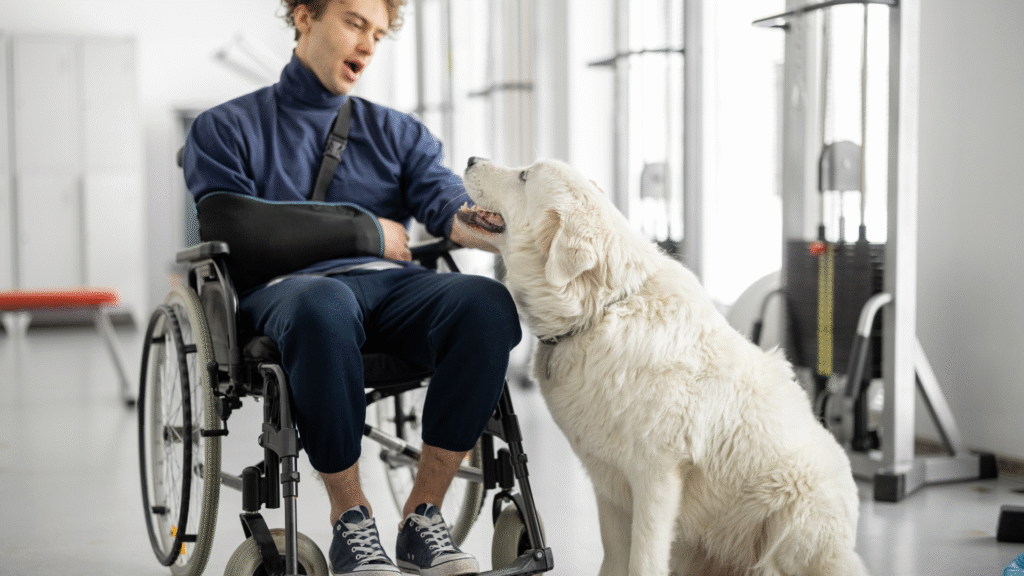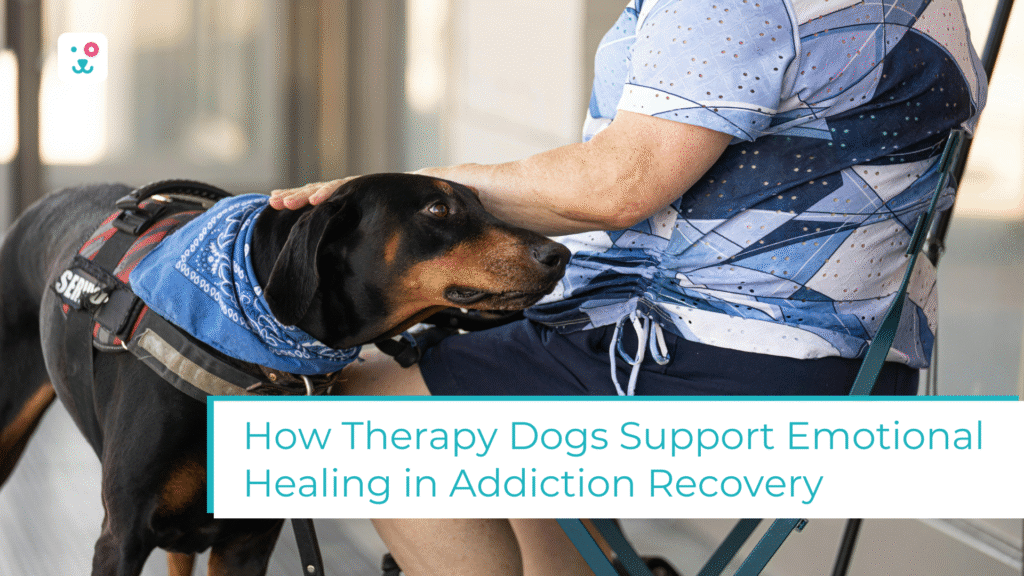Addiction recovery is a deeply personal and often emotionally overwhelming journey. As individuals work to rebuild their lives, they face not only physical withdrawal but also anxiety, shame, loneliness, and trauma. Traditional therapy methods—while essential—sometimes need reinforcement from less conventional, more heart-centered sources. Enter the therapy dog. With their unconditional love, calming presence, and intuitive emotional intelligence, therapy dogs are increasingly being recognized as powerful allies in addiction recovery. Their impact goes far beyond cute cuddles—they help bridge the gap between emotional pain and human healing.
What Are Therapy Dogs?
Therapy dogs are specially trained animals who provide comfort, affection, and support to people in a variety of settings, including hospitals, schools, disaster zones, and increasingly, rehabilitation and recovery centers.
Unlike service dogs (who perform specific tasks for one person), therapy dogs are trained to interact with multiple people and respond to emotional cues. Their mission is simple yet profound: to be present, calming, and supportive companions during healing.

The Emotional Weight of Recovery
Before we dive into how dogs help, let’s understand what someone in recovery is often dealing with:
- Emotional instability due to withdrawal and brain chemistry changes
- Guilt and shame from past behaviors and broken relationships
- Fear and anxiety about staying sober
- Loneliness from cutting off toxic social ties
- Depression or trauma that may have fueled the addiction
These aren’t small hurdles. They are the daily emotional battles that make recovery feel impossible at times. And this is exactly where therapy dogs step in.
How Therapy Dogs Promote Emotional Healing?
1. Reducing Stress and Anxiety
Petting a dog has been shown to lower cortisol (the stress hormone) and increase oxytocin, the “bonding” hormone that promotes feelings of calm and connection. For someone battling cravings or emotional triggers, just sitting with a therapy dog can be grounding.
“When I was on edge and wanted to use, having a dog rest its head on my lap reminded me to breathe. That moment saved me more than once.”
— Jesse, in recovery
2. Providing Non-Judgmental Presence
People in recovery often struggle with guilt, stigma, and fear of being judged. A therapy dog offers unconditional acceptance—no questions asked. This kind of pure companionship can be incredibly healing for someone relearning how to trust.
3. Encouraging Routine and Responsibility
Rebuilding a sense of structure is crucial in early recovery. Spending time with therapy dogs, walking them, or even participating in their care teaches routine, responsibility, and reliability—skills that directly support long-term sobriety.
4. Boosting Mood and Combating Depression
Dogs are natural mood boosters. Their playful nature, loyalty, and affection stimulate dopamine and serotonin—chemicals often depleted in those struggling with addiction or depression. Simply put, they make people smile when they forget how.
5. Improving Social Interaction and Communication
Therapy dogs are natural ice-breakers. In group therapy settings, they ease tension, lower emotional walls, and foster a sense of safety, which helps participants open up. In turn, this can deepen connections and encourage more effective therapy outcomes.
6. Helping Heal Trauma
Many people with substance use disorders have experienced trauma—be it childhood abuse, domestic violence, or war-related PTSD. Dogs offer non-verbal support that feels safe and comforting. Their gentle, empathetic nature can create a sense of calm that allows trauma work to begin.

Therapy Dogs in Recovery Centers
Many progressive rehab centers are now integrating Animal-Assisted Therapy (AAT) into their programs. Whether it’s a certified therapy dog visiting weekly or full-time resident dogs living onsite, the benefits are hard to ignore:
- Enhanced engagement in therapy sessions
- Faster emotional regulation during challenging moments
- Improved group dynamics and bonding
- More positive attitudes toward recovery
These dogs become part of the therapeutic environment, helping both staff and clients create a more humane and emotionally intelligent space.
Not a Replacement—But a Powerful Complement
While therapy dogs are not a substitute for professional treatment or counseling, they are a powerful complement to it. Think of them as emotional guides walking alongside traditional recovery tools like:
- Individual therapy
- Group counseling
- Medication-assisted treatment
- Mindfulness and meditation
- Peer support networks
By helping clients feel safer, more open, and more connected, dogs pave the way for deeper healing.
Real-Life Example: A Tail That Heals
At a recovery center in California, a Golden Retriever named Marley has become somewhat of a legend. Clients often say he’s the “first living thing they’ve trusted in years.” Marley greets everyone at the door, sits quietly during therapy sessions, and instinctively approaches those who are struggling.
One client shared, “I came here thinking I’d never feel love again. That dog proved me wrong on day one.”
Also Read: The Benefits of Daily Walks with Your Dog
Final Thoughts: Healing Happens in Unexpected Ways
Addiction recovery is not a straight line—it’s an emotional maze filled with highs and lows. Therapy dogs don’t solve all the problems, but they do something medicine and therapy can’t always reach: they heal through presence.
Their gift is silent but profound. They don’t ask questions. They don’t give advice. They simply sit beside you as if to say, “You’re not alone anymore.”
And for many on the road to recovery, that’s exactly what they need most.

